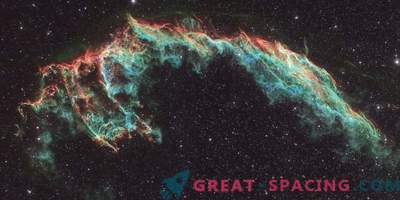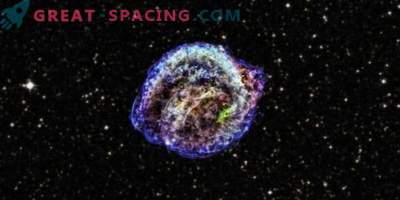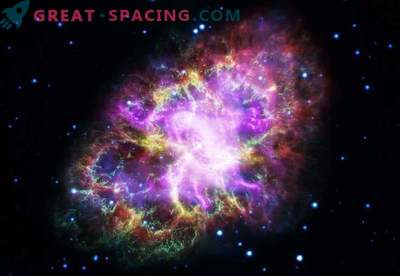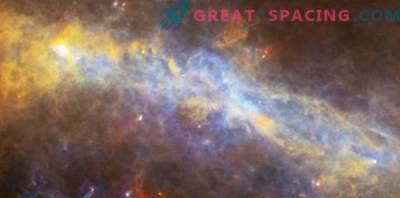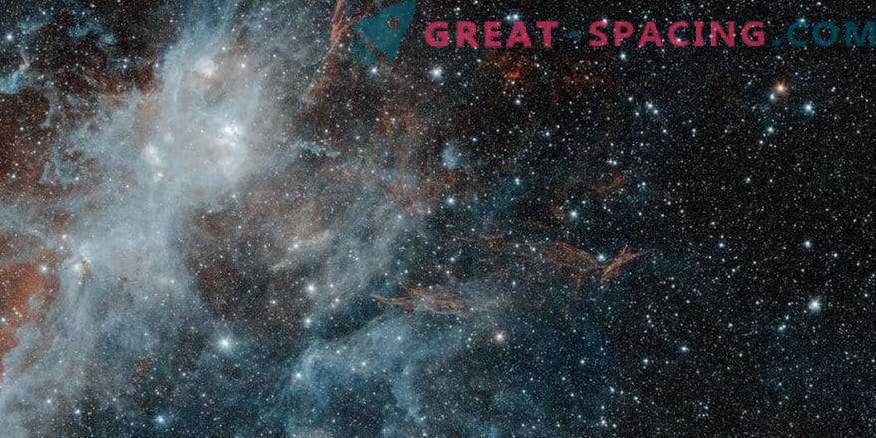
Thin red veins with activated gas mark the location of the remainder of the supernova HBH 3 in a picture from the NASA Spitzer space telescope. The white formation is part of the W3, W4 and W5 stellar birth areas. IR wavelengths of 3.6 microns are displayed in blue, and from 4.5 microns - red. White marked the combination of both wavelengths
Thin red veins with activated gas mark the location of one of the large supernova remnants in the Milky Way. Picture taken by NASA Spitzer space telescope.
Supernova remnant refers to the collective signs of a blown up star. The red filaments in the frame belong to the remnant of the supernova HBH 3, which were first noticed in 1966 by radio telescopes. Traces of residue also emit optical light. The branches of the luminous material are most likely a molecular gas hit by a supernova shock wave. The energy from the explosion activated the molecules and made them emit infrared light.
The white cloud shape is part of the W3, W4 and W5 star birth areas. These regions extend much further than snapshot coverage. Red strings and white areas are 6400 light-years distant from us and located on the territory of the Milky Way. HBH 3 spans 150 light-years across, making it one of the largest remnants of supernova. It is possible that this is also one of the oldest. Initial estimates suggest that the explosion occurred from 80,000 to a million years ago. In 2016, the Fermi space telescope detected high-energy gamma rays coming from a region near HBH 3. This emission can come from a gas in one of the neighboring regions of stellar birth, activated by high-power particle emissions from a supernova explosion.
The Spitzer telescope on August 25 will celebrate its 15th birthday in space. The device studies the Universe in IR light, which is less energetic than the optical one, observed by the simple eye. In the picture, received in March 2010, IR waves of 3.6 microns are displayed in blue, and indicators from 4.5 microns - red. White marked the combination of both wavelengths.



